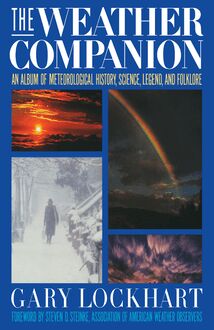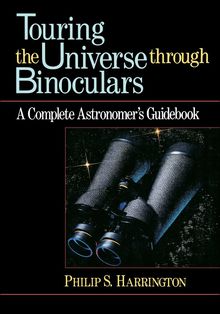Ozone Crisis , livre ebook
179
pages
English
Ebooks
1990
Vous pourrez modifier la taille du texte de cet ouvrage
Obtenez un accès à la bibliothèque pour le consulter en ligne En savoir plus
Découvre YouScribe en t'inscrivant gratuitement
Découvre YouScribe en t'inscrivant gratuitement
179
pages
English
Ebooks
1990
Vous pourrez modifier la taille du texte de cet ouvrage
Obtenez un accès à la bibliothèque pour le consulter en ligne En savoir plus
Publié par
Date de parution
01 août 1990
Nombre de lectures
0
EAN13
9781620459508
Langue
English
Straight from today's headlines, award-winning science writer Sharon Roan offers an incisive look at one of the planet's most pressing ecological concerns. Ozone Crisis tells the compelling, often shocking story of the discovery of ozone depletion, the fight to ban chlorofluorocarbons (CFCs), and future prospects and prognoses.
"At last a sober, well-researched, and well-written book on an important environmental problem...a good yarn about stratospheric ozone...This is clearly one of the best case studies of the evolution of science-intensive public policy."
--Choice
"An engaging account...skillfully recounts in terms readily understood by lay readers the shrewd detective work and unprecedented scientific cooperation that helped give rise to the Montreal Treaty."
--John C. Topping, President, Climate Institute
"Whether you have the slightest interest in environmental matters or not, this book should be on your 'must check out!' list."
--Western Producer
"Anyone interested in understanding contemporary environmental policy issues will find Roan has written a well-researched, well-balanced, and informative book in an easy-to-read, journalistic style."
--Naturalist Review
Publié par
Date de parution
01 août 1990
Nombre de lectures
0
EAN13
9781620459508
Langue
English
Ozone Crisis
The Wiley Science Editions
The Search for Extraterrestrial Intelligence , by Thomas R. McDonough
Seven Ideas that Shook the Universe , by Byron D. Anderson and Nathan Spielberg
The Naturalist s Year , by Scott Camazine
The Urban Naturalist , by Steven D. Garber
Space: The Next Twenty-Five Years , by Thomas R. McDonough
The Body In Time , by Kenneth Jon Rose
Clouds in a Glass of Beer , by Craig Bohren
The Complete Book of Holograms , by Joseph Kasper and Steven Feller
The Scientific Companion , by Cesare Emiliani
Starsailing , by Louis Friedman
Mirror Matter , by Robert Forward and Joel Davis
Gravity s Lens , by Nathan Cohen
The Beauty of Light , by Ben Bova
Cognizers: Neural Networks and Machines that Think , by Collin Johnson and Chappell Brown
Inventing Reality: Physics as Language , by Bruce Gregory
The Complete Book of Superconductors , by David Wheeler and Mark Parish
Planets Beyond: Discovering the Outer Solar System , by Mark Littmann
The Oceans: A Book of Questions and Answers , by Don Groves
The Starry Room , by Fred Schaaf
The Weather Companion , by Gary Lockhart
To the Arctic: An Introduction to the Far Northern World , by Steven Young
Ozone Crisis: The 15-Year Evolution of a Sudden Global Emergency , by Sharon Roan
The Endangered Kingdom , by Roger DiSilvestro
Serendipity: Accidental Discoveries in Science , by Royston Roberts
Senses and Sensibilities , by Jillyn Smith
Chemistry for Every Kid , by Janice Pratt VanCleave
The Atomic Scientists: A Biographical History , by Henry Boorse, Lloyd Motz and Jefferson Weaver
The Starflight Handbook: A Pioneer s Guide to Interstellar Travel , by Eugene Mallove and Gregory Matloff
Ozone Crisis
The 15-Year Evolution of a Sudden Global Emergency
SHARON ROAN
WILEY SCIENCE EDITIONS
Publisher : Stephen Kippur
Editor : David Sobel
Managing Editor : Frank Grazioli
Interior Design and Production : WordCrafters Editorial Services, Inc.
Text Credits
page 29 : Quotation from Angela Singer interview with James Lovelock, Danger Theory in the Can, December 18, 1974, reprinted by courtesy of the Yorkshire Post; page 111 : Quotation from James Lovelock, Causes and Effects of Changes in Stratospheric Ozone: Update 1983. Environment , Vo. 26, No. 10, p. 26 , December 1984. Reprinted with permission of the Helen Dwight Reid Educational Foundation. Published by Heldref Publications, 4000 Albemarle St., N.W., Washington, D.C. 20016. Copyright 1984; page 253 : Quotation from Wallace S. Broecker, Unpleasant Surprises in the Greenhouse? Reprinted by permission from Nature , Vol. 328, p. 123 . Copyright 1987 Macmillan Journals Limited.
This publication is designed to provide accurate and authoritative information in regard to the subject matter covered. It is sold with the understanding that the publisher is not engaged in rendering legal, accounting, or other professional service. If legal advice or other expert assistance is required, the services of a competent professional person should be sought. FROM A DECLARATION OF PRINCIPLES JOINTLY ADOPTED BY A COMMITTEE OF THE AMERICAN BAR ASSOCIATION AND A COMMITTEE OF PUBLISHERS.
Copyright 1989, 1990 by Sharon Roan
All rights reserved. Published simultaneously in Canada.
Reproduction or translation of any part of this work beyond that permitted by section 107 or 108 of the 1976 United States Copyright Act without the permission of the copyright owner is unlawful. Requests for permission or further information should be addressed to the Permission Department, John Wiley Sons, Inc.
Library of Congress Cataloging-in-Publication Data
Roan, Sharon.
Ozone crisis: the 15-year evolution of a sudden global emergency.
(Wiley science editions)
Bibliography: p.
1. Atmospheric ozone-Environmental aspects. I. Title. II. Series.
TD885.5.085R63 1989 363.7 392 88-33952
ISBN 0-471-61985-X ISBN 0-471-52823-4 (pbk)
90 91 10 9 8 7 6 5 4 3 2 1
Foreword
When I began my campaign for the 1988 Democratic nomination, I said that the depletion of the ozone layer, the greenhouse effect, and the global environmental crisis were the most important issues this country would have to face in the next decade and the next century. The political pundits, to put it mildly, were not impressed. Some said that anyone who thought ozone belonged on the next president s agenda was not going to become the next president.
The pundits were right about that, as it turned out, but they were wrong about the issue. After years of neglect, global warming and stratospheric ozone depletion have suddenly become matters of widespread international concern. The escalation of the ozone crisis even jump-started an unprecedented international treaty. While we have hardly begun to make the dramatic changes that will be necessary, it is a revolutionary step for society to recognize the problem at all.
For those who first raised these issues, the sudden awakening of public concern about the global environmental crisis may seem a triumph. At last, people will no longer dismiss the destruction of the earth s stratospheric ozone shield as the stuff of bad science fiction. But the real work now begins. This enormous crisis, which has been staring us in the face for more than a decade, poses daunting challenges that remain to be solved.
Even now, there are those who look for every possible excuse not to act, clinging to the frail human hope that perhaps these problems will somehow go away. Some want to keep waiting for more evidence, for an even clearer picture of the dire consequences we face. Others seem to think it would be easier to adapt to a crisis than prevent it-in the view of one Reagan administration official, to deal with holes in the ozone by passing out sunglasses and floppy hats. Almost everyone is overwhelmed by the prospect of solutions that will be harder than anything we have done before.
So even though we can rejoice at some progress-that, for example, the Congress is now considering a ban on the production of ozone-eating chlorofluorocarbons (a step that seemed unthinkable just a few years back)-the path ahead is still unimaginably difficult. We know what to do, but we do not yet know whether we have the courage within ourselves to do it.
This book will help us confront that central question. In Ozone Crisis , Sharon Roan recounts the journey of an environmental issue from the laboratory to the international negotiating table. The book profiles the brilliant scientists who saw trouble looming and did everything they could to show the world what it meant. It is a revealing portrait of a society with its head in the sand-industry, politicians, and the general public stubbornly refusing to accept change.
I hope we can learn from this disturbing saga. It took us 15 years to see what we have done to the atmosphere. We cannot afford to wait another 15 years to clean it up.
Senator Al Gore
February 1989
Preface
In May 1990, the United States government rejected a proposal by international leaders that would lead to protection of the earth s life-sustaining ozone layer.
Rejected it because it would cost too much money.
Thus, 15 years after the first warning, the world is not much closer to the elimination of manmade chlorofluorocarbon gases that threaten to destroy the ozone layer.
Ozone is a pungent, poisonous gas. Wafting some 15 miles above the earth s surface, it helps shield living things from the sun s searing ultraviolet light. If ozone is lost, more ultraviolet light reaches the earth, which can lead to increasing rates of skin cancer, the death of some microorganisms, and the failure of crops and plants. It was in 1974 that University of California, Irvine, chemists F. Sherwood Rowland and Mario Molina discovered that chlorofluorocarbons-the ubiquitous household chemicals that comprise a billion-dollar worldwide industry-could rise slowly to the upper atmosphere and destroy the earth s fragile ozone shield.
Rowland and Molina naively hurried to alert the world of their findings. Although their theory was judged to be correct in 1976, they were to discover that billions of dollars in profits would outweigh a potential environmental problem whose onset and magnitude were unknown.
In their quest to rid the world of these chemicals, commonly used as coolants (such as Freon) for home and automobile air conditioners and in the making of fast-food containers, Rowland and Molina faced a curious dilemma. Since CFCs take 100 years or more to reach the stratosphere, damage to the ozone layer takes place long before it becomes apparent. Prudence suggested that the chemicals be banned before any damage was done. But in the case of the ozone crisis, prudence was forsaken.
Why did it take so long for the world to believe the ozone layer was in danger and act to protect it? The scientists warning was lost under an avalanche of profits and politics. In 1975, a Du Pont official said, Should reputable evidence show that some fluorocarbons cause a health hazard through depletion of the ozone layer, we are prepared to stop production of the offending compounds. By 1978, the environmentally conscious spirit of Americans had led to a ban of CFCs in aerosol spray cans-a first step in the phase-out of the dangerous chemicals.
But the vision began to blur. In the early 1980s, a new administration came to power and the leader of the U.S. Environmental Protection Agency, Anne Gorsuch Burford, believed the ozone controversy to be nothing more than a sensational scare issue. So many policymakers considered the ozone so unimportant that a Washington environmentalist had to beg his friends to show up at an EPA meeting on the subject. Rebuffed by his colleagues, Sherry Rowland no longer received invitations to speak before industry groups or at other universities chemistry departments.
Then, suddenly, a calamitous development. Nearly half of the ozone over Antarctica suddenly disappeared in 1985.


